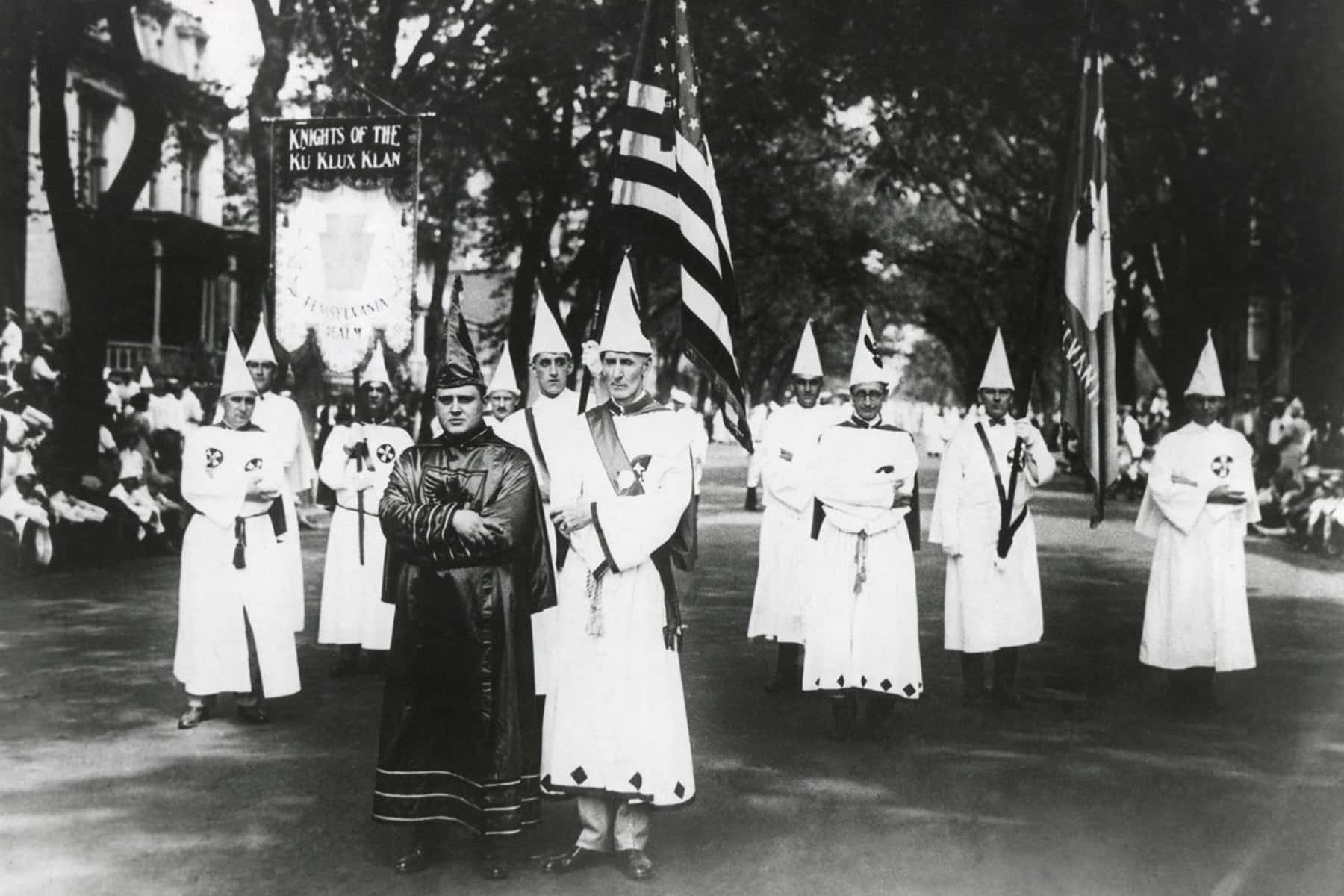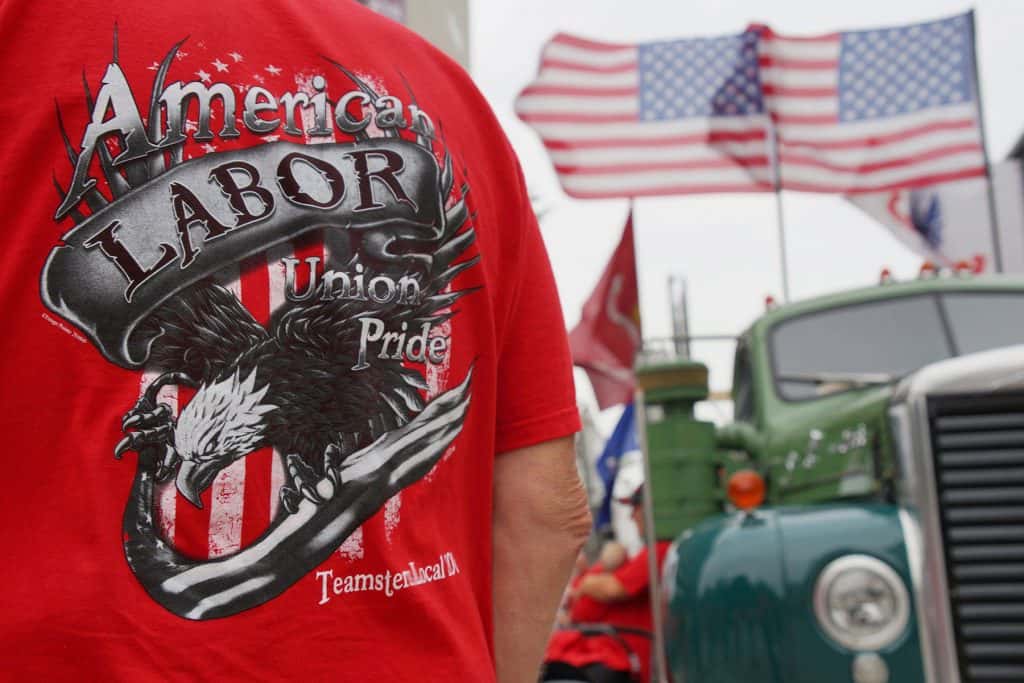
“American history is longer, larger, more various, more beautiful, and more terrible than anything anyone has ever said about it.” – James Baldwin
My journey of learning about America has taken me in many different directions. As a young boy I was always inquisitive. My favorite books were encyclopedias. I loved reading about everything. I loved to learn new things. History was always one of my favorite topics. History allowed me to see everything. I could study the history of anything.
I can recall while in fourth or maybe fifth grade learning about the races of humans. The memory is crystal clear in my mind today. According to what we were taught, there were three races: Caucasoid, Mongoloid and Negroid. I saw the same terms in a 1972 era encyclopedia that my in-laws once had.
A German anatomist, Johann Friedrich Blumenbach, frequently called the father of physical anthropology, created a theory of the five races of man in his 1775 doctoral dissertation On the Natural Variety of Mankind. He followed the earlier classification system developed by his teacher Carl Linnaeus who created the first such system. Blumenbach distributed his dissertation for general consumption in 1776.
By 1795 he had created a taxonomy of humans where he “divided all humans into five groups, defined both by geography and appearance – in this order, the Caucasian variety, for the light-skinned people of Europe and adjacent parts of Asia and Africa; the Mongolian variety, for most other inhabitants of Asia, including China and Japan; the Ethiopian variety, for the dark- skinned people of Africa; the American variety, for most native populations of the New World; and the Malay variety, for the Polynesians and Melanesians of the Pacific and for the aborigines of Australia” according to biologist Steven Jay Gould. Blumenbach only included the first four races in the 1775 dissertation. He did not classify them in a hierarchy as many philosophers and scientist would later. They would place Caucasians at the top and Africans at the bottom of the human family.
I was taught to believe in this idea of race as a biological construct in school. I think most people still do believe that different races exist. I hear people talk about race as if it is real all the time. I learned the truth by watching Race – The Power of an Illusion. California Newsreel, the creators of the three part series, said this in their news release. “What if we suddenly discovered that our most basic assumption about race – for instance, that the world’s people can be divided biologically along racial lines – was false? And if race is a biological “myth,” where did the idea come from? How do our institutions give race social meaning and power by advantaging white people?”
A big part of the work I do is related to race. Race is a huge part of how we evaluate other people as Americans. We are all taught to believe certain things about people based on the “race” they belong to. Race is not biologically real but we’ve made it real. It is a social construct that has managed to have such immense power that we can’t easily see past it.
The most significant problem with our current idea of race is not that it has no basis in biology or science. Instead the elephant in the room when it comes to race is that we use it to assign value to people. There is a hierarchy of race, with whites always at the top and blacks always at the bottom. This is seldom talked about in mixed company because it is such an uncomfortable idea. Many claim to not believe it but act as if they do.
Not many people like to admit that they believe some people are better than others based on race. It doesn’t really matter if one does or not. In our society it plays out as a daily reality. This is not something new or unique. To admit that one feels the group they belong to is in some way better, or more succinctly superior, is frowned upon nowadays. That does not mean that it is uncommon though.
We hear the term white supremacy all the time. We generally immediately associate the term with groups like the Ku Klux Klan and modern day Neo-Nazis. As a result of how many perceive of the idea of white supremacy, it is problematic to them to call America a white supremacist nation. We’ve grown to see white supremacy as the manifestation of hate mongering groups that terrorize blacks, Jews, immigrants and others. I find in my work that the term white supremacy tends to be one that causes confusion and makes it difficult for some to come to the table to have an honest conversation about race or racism.
There are some who find great comfort in calling America a white supremacist society. Others find it insulting. There is generally no middle ground. The reason for this is simple. If you see white supremacy as just the philosophy of bigoted groups like the Klan then it limits your perception of what white supremacy is. However, if you see the broader definition of white supremacy as a system that has provided benefits to whites at the detriment of non-whites for centuries then you can see the tentacles of white supremacy in many places.
Because people define it in different ways the conversations about it are not constructive. Those who define it one way will never fully be able to have productive conversations with those who see it the other way. I would guess that most white people in this country would never define their nation as one awash in white supremacy. It flies in the face of what they’ve been taught to see their country as. A nation founded on principles of freedom, justice and liberty could not possibly be a white supremacist country if you believe in the commonly heard stories of America.
White supremacists are seen to be bad people. Most white Americans believe their country to be honorable and a shining example of good (good values, good principles, good ideals and good people). This is what we all learn about America in school. We get consistent reinforcement from the books we read, what we watch on television and see in Hollywood films. The Founding Fathers were good people who created a good nation founded on good values that protected our basic human rights. The Bill of Rights in the Constitution was an example of a new type of thinking that had never been articulated before. We are pounded with these ideas in history and civics class. Most Americans still believe these things to be true and value their country as being exceptional and outstanding as well as the moral torchbearer that the rest of the world should emulate.
If you see America in this way it is impossible to see white supremacy attached to it. It is like a gut punch to hear someone say America is a country founded on white supremacy principles. It hurts and forces some white people’s conscious minds to turn off. Once they hear the term white supremacist used in this way they won’t hear anything said after this. No words, no facts, no evidence will be sufficient to turn their minds on again. They will not hear it and certainly will not believe it. It’s known as cognitive dissonance.
Leon Festinger, a social psychologist developed the theory of cognitive dissonance in the 1950s while completing research and teaching at Stanford University. The basic principle is simple. It refers to a situation where people have conflicting attitudes, beliefs or behaviors. These conflicts produce feelings of mental discomfort leading to a need to alter one of the attitudes, beliefs or behaviors to reduce the discomfort and restore balance.
A classic example of cognitive dissonance is how those who smoke knowing it leads to cancer find a way to justify continuing to smoke. The behavior of smoking conflicts with the cognition of knowing it causes cancer. Therefore one ignores the fact and continues to find reasons to justify the behavior.
The study by Festinger and his colleagues developed as they studied a cult described in the 1956 book When Prophecy Fails. A suburban housewife named Dorothy Martin using the pseudonym Miriam Keech led the cult. She claimed to have received messages from alien beings that told her a flood would destroy life on earth on December 21, 1954. Festinger and his associates joined the group months ahead of the appointed date approaching. In the months leading up to the apocalypse the group members quit their jobs and got rid of most of their worldly possessions.
Obviously the date came and went with the world not ending. Despite this, she convinced the cult members that their warnings had made God spare Earth from the apocalypse. The cultist believed even more strongly in their beliefs. They never abandoned what they believed to be true and no evidence was sufficient to change their minds. Festinger and the other researchers wrote about this cult and described their beliefs and increased conviction in what they believed. They described the following conditions as necessary for them to hold on to their beliefs.
- The belief must be held with deep conviction and be relevant to the believer’s actions or behavior.
- The belief must be sufficiently specific and connected with the real world.
- The evidence must be fully recognized by the believers.
- The believer must have support from other believers.
Festinger described this as cognitive dissonance whereby the increased proselytizing of their initial beliefs by the group members reduced their dissonance and provided comfort as other members of the cult felt and behaved in the same way.
The mythology of America is a belief that falls into the realm of cognitive dissonance. For far too many Americans, the evidence, which contradicts what they believe about the country and its history, provides a great deal of cognitive dissonance. They believe the American myth with great conviction. This belief manifests itself in a constant outpouring of love for their country and shows of patriotism in public spaces. American flags are worn on clothing, flown on vehicles and on flagpoles outside homes and businesses. The national anthem is sang or played at all organized sporting events. The belief is constantly reaffirmed. The words of America the Beautiful are memorized by most Americans. The Pledge of Allegiance, the Song America the Beautiful as well as the National Anthem cement this love, belief and patriotism into our psyches.
I pledge Allegiance to the flag of the United States of America and to the Republic for which it stands, one nation under God, indivisible, with Liberty and Justice for all.
America, America
God shed his grace on thee
And crown thy good with brotherhood
From sea to shining seaOh say does that star spangled banner yet wave,
For the land of the free, and the home of the brave.
The ugly parts of American history such as the taking of the land of Native Americans and their subsequent victimization, enslavement and genocide are rarely spoken of in public.
The enslavement of millions of Africans stolen from their homeland and violently forced to work for free for 246 years is taught in a very minimal way in our history classes. Learning about the brutality of slavery and the immense trauma caused is a tough pill to swallow for most white Americans.
The violence associated with one hundred years of Jim Crow segregation is dismissed in our history textbooks. The Chinese Exclusion Act of 1882, which barred Chinese from immigrating to the U.S. for sixty years, is not included in most American history classes. The stories of thousands of lynchings and dozens of race riots perpetrated by whites are rarely if ever mentioned in our history books or classrooms. The role of our government in creating advantages for whites while placing barriers in the path of people of color is rarely learned by most of us.
Ira Katznelson’s groundbreaking book When Affirmative Action Was White shed light on twentieth century government programs designed to help whites while disadvantaging people of color, particularly blacks. The New York Times Book Review described it as a “penetrating new analysis.” “Ira Katznelson fundamentally recasts our understanding of twentieth-century American history and demonstrates that all the key programs passed during the New Deal and Fair Deal era of the 1930s and 1940s were created in a deeply discriminatory manner. Through mechanisms designed by Southern Democrats that specifically excluded maids and farm workers, the gap between blacks and whites actually widened despite postwar prosperity.”
Learning about these parts of American history affirms the lived experiences of people of color. It also creates a great deal of dissonance in the minds of those who have believed the mythological American tales. The stories they learned about why whites are so far ahead of blacks are not true. The evidence is clear that this nation has for four hundred years treated black people as inferior beings. We have been treated as belonging at the bottom of the racial hierarchy. In the subconscious of many we deserve what we’ve received.
American leaders and institutions have expressed this belief out loud. In the opinion of the U.S. Supreme Court in the case Plessy v. Ferguson March 6, 1857 the court had the following to say about black people.
“Can a negro, whose ancestors were imported into this country, and sold as slaves, become a member of the political community formed and brought into existence by the Constitution of the United States, and as such become entitled to all the rights, and privileges, and immunities, guarantied by that instrument to the citizen?…The question before us is, whether the class of persons described…compose a portion of this people, and are constituent members of this sovereignty? We think they are not, and that they are not included, and were not intended to be included, under the word ‘citizens’ in the Constitution, and can therefore claim none of the rights and privileges which that instrument provides for and secures to citizens of the United States. On the contrary, they were at that time considered as a subordinate and inferior class of beings, who had been subjugated by the dominant race, and, whether emancipated or not, yet remained subject to their authority, and had no rights or privileges but such as those who held the power and the Government might choose to grant them…They had for more than a century before been regarded as beings of an inferior order, and altogether unfit to associate with the white race, either in social or political relations; and so far inferior, that they had no rights which the white man was bound to respect; and that the negro might justly and lawfully be reduced to slavery for his benefit.”
Just over one year later Abraham Lincoln gave a speech in Charleston, Illinois on September 18, 1858 where he made clear his belief in the inferiority of blacks.
“I am not, nor ever have been, in favor of bringing about in any way the social and political equality of the white and black races … I am not nor ever have been in favor of making voters or jurors of Negroes, nor of qualifying them to hold office, nor to intermarry with white people; and I will say in addition to this that there is a physical difference between the white and black races which I believe will forever forbid the two races from living together on terms of social and political equality. And inasmuch as they cannot so live, while they do remain together there must be a position of superior and inferior, and I as much as any other man am in favor of having the superior position assigned to the white race.”
If one were to say that today, they would be immediately accused of being a white supremacist. Lincoln is not the only famous American to question the value of black life. Thomas Jefferson, U.S. President and slaveholder wrote a famous book called Notes on the State of Virginia in 1781. The only full-length book he ever wrote has been called the “best single statement of Jefferson’s principles, the best reflection of his wide-ranging tastes and talents.” In this book Jefferson talked about what he saw as differences between the black and white races.
“They seem to require less sleep. A black, after hard labor through the day, will be induced by the slightest amusements to sit up till midnight, or later, though knowing he must be out with the first dawn of the morning. They are at least as brave, and more adventuresome. But this may perhaps proceed from a want of forethought, which prevents their seeing a danger till it be present…love seems with them to be more an eager desire, than a tender delicate mixture of sentiment and sensation. Their griefs are transient.”
However, the most famous words he penned declare his idea that blacks were inferior to whites.
“I advance it therefore as a suspicion only, that the blacks, whether originally a distinct race, or made distinct by time and circumstances, are inferior to the whites in the endowments both of body and mind.”
We don’t learn about Notes on the State of Virginia in school. All of us learn about the Declaration of Independence where he declared, “We hold these truths to be self-evident, that all men are created equal, that they are endowed by their Creator with certain unalienable Rights, that among these are Life, Liberty and the pursuit of Happiness.”
Founding Father and slaveholder Benjamin Franklin also offered his views on the inferiority of black people while writing Observations Concerning the Increase of Mankind, Peopling of Countries, etc. in 1751.
“the English make the principal body of white people on the face of the earth. I could wish their numbers were increased. And while we are, as I may call it, scouring our planet, by clearing America of woods, and so making this side of our globe reflect a brighter light…why should we in the sight of superior beings, darken its people? Why increase the sons of Africa, by planting them in America, where we have so fair an opportunity, by excluding all blacks and tawneys, of increasing the lovely white and red?”
The silent film The Birth of A Nation in 1915 by W.D. Griffith was the highest grossing film in American history prior to another film, which also celebrated the South, Gone With the Wind. The Birth of A Nation showed the Ku Klux Klan as the conquering heroes who removed the inferior blacks from office saving the South from “negro” rule. It was the first film ever screened in the White House on the evening of March 21, 1915 for President Woodrow Wilson. The President loved the film and said this after viewing it:
“It is like writing history with lightning, and my only regret is that it is all so terribly true.”
Beginning in the 1930’s the Federal Housing Authority (FHA) wrote underwriting manuals to assist in providing housing for Americans across the country. The new system allowed American homeownership rates to increase dramatically. Unfortunately, racism was written into the Underwriting Manuals of the FHA making it clear that blacks and other non-whites were to be treated as inferior to whites. In the 1938 Underwriting Manual they speak many times of the need to provide protection from “inharmonious racial groups.”
“Natural or artificially established barriers will prove effective in protecting a neighborhood…from adverse influences…Usually the protection…includes prevention of the infiltration of…inharmonious racial groups…a high rating should be given only where adequate and properly enforced zoning regulations exist or where effective restrictive covenants are recorded…”
The University of Minnesota has developed a project to map restrictive covenants in the Twin Cities area they call Mapping Prejudice. They give a history of the use of racially restrictive covenants on their website. “During the twentieth century, racially-restrictive deeds were a ubiquitous part of real estate transactions. Covenants were embedded in property deeds all over the country to keep people who were not white from buying or even occupying land.”
The FHA Underwriting Manual recommended and even demanded the use of racial restrictive covenants while including instructions on how they should be used as well as a template on the language to be used in writing them and their importance as a tool to keep inharmonious racial groups out of white neighborhoods. The following was found in the 1938 Underwriting Manual.
- “Recommended restrictions should include provision for the following…Prohibition of the occupancy of properties except by the race for which they are intended.”
- “Schools should be appropriate to the needs of the new community and they should not be attended in large numbers by inharmonious racial groups.”
- “The introduction of inharmonious racial groups will produce the same effects as those which follow the introduction of incongruous land uses, when the latter tend to lower the level of land and lessen the desirability of residential areas.”
- “The presence of socially or racially inharmonious groups in a neighborhood tends to lessen or destroy owner-occupancy appeal.”
These instructions were included in the Underwriting Manuals from the 1930s through 1950. The FHA played a huge role in creating the residential segregation we see today. The federal government under the Homeowners Loan Corporation (HOLC) created maps that are known as redlining maps today but were officially called Residential Security Maps. The HOLC with the assistance of local bankers and realtors created these private maps in 239 cities from 1934-1940. The maps were unknown to the general public until the 1970s when historian Kenneth Jackson discovered them at the National Archives.
In describing why neighborhoods received the lowest rating designated by the color red on the maps, the HOLC described “inharmonious racial groups” as a primary cause of the lowest rating being justified for those areas. Blacks were always considered to be an inharmonious racial group and detrimental to property values making it exceedingly difficult for them to receive loans for homes or businesses. Some white ethnic groups who’d recently immigrated to America like Poles and Italians as well as Jews were considered to be inharmonious racial groups along with Asians, Native Americans and Mexicans.
There is a great deal we can learn about America by studying the history of people of color. What I’ve discovered in my study of the history of Chinese, Japanese, Koreans, Mexicans, Native Americans and many other people of color is that one can learn a lot about white people while engaged in those studies. No history of any non-white is complete without the roles whites played in their experiences fighting for citizenship and equality in America.
The stories and quotes I have shared are just a few examples of the role of the supremacy of whites embedded in the threads of American history. Sociologist Joe Feagin in his book The White Racial Frame describes how we see the world around us as Americans. Feagin tells us “this white racial frame encompasses not only the stereotyping, bigotry, and racist ideology accented in other theories of “race,” but also the visual images, array of emotions, sounds of language, interlinking interpretations, and inclinations to discriminate that are still central to the frame’s everyday operation. Deeply imbedded in American minds and institutions, this white racial frame has for centuries functioned as a broad worldview, one essential to the routine legitimation, scripting, and maintenance of systemic racism in the United States.”
We need to begin to take a more honest look at our history and the role of the hierarchy of race, which has always placed whites at the top. It’s not about calling the nation out as racist. The evidence of American racism is copious. There is no doubt when one studies American history that racism is a part of Americana. Some people simply refuse to say it out loud. White supremacy is so much more than simply bigoted people in hoods, or wearing swastikas and shouting “white power.” If we stayed glued to that definition only, we will never truly understand the challenge we face to undo the learning of whiteness as superior.
“Not everything that is faced can be changed, but nothing can be changed until it is faced.” – James Baldwin














